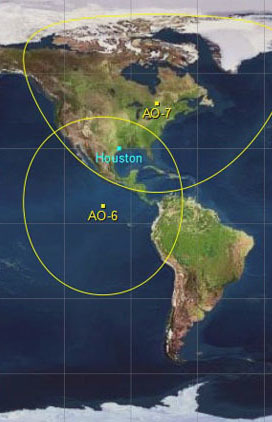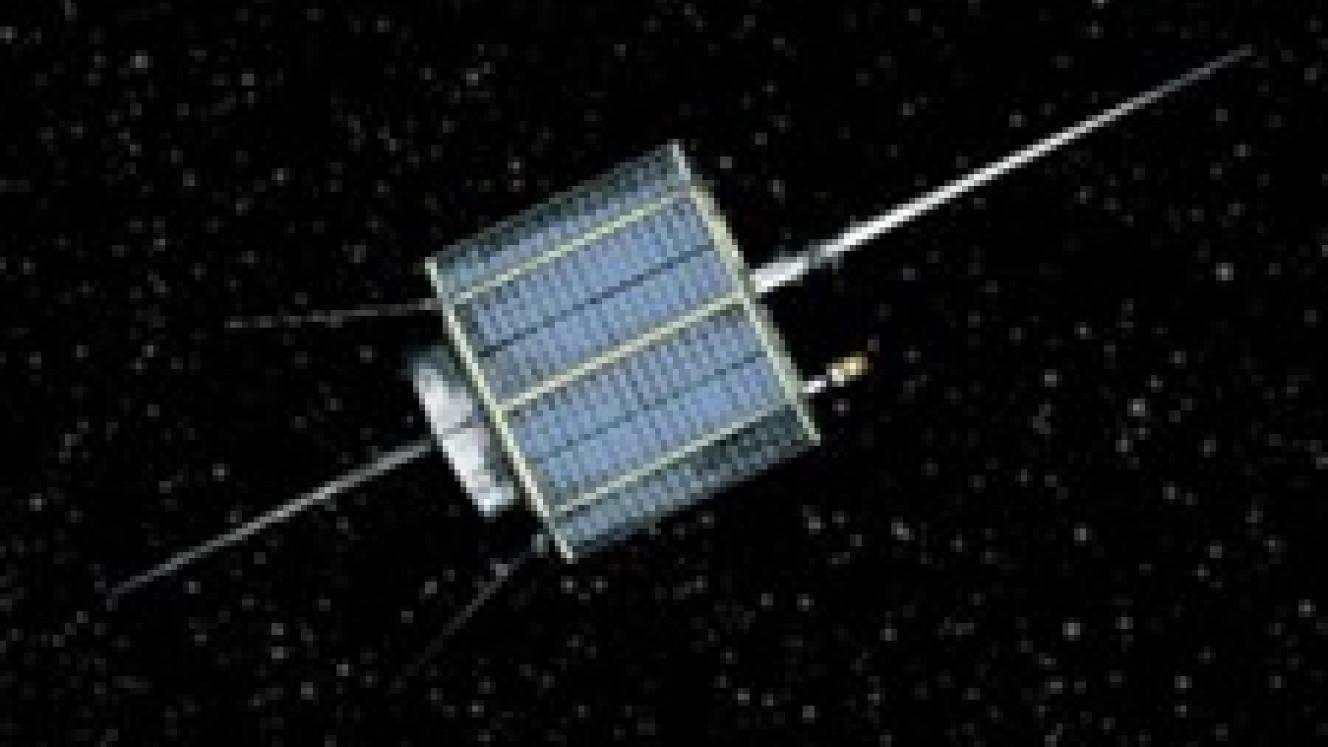Amateur radio satellites are developed and built by many AMSAT (Amateur Radio Satellite Association) groups around the word and launched as secondary payloads on commercial launches. Once successfully orbiting the earth, these satellites are given OSCAR (orbiting satellite carrying amateur radio) designations – for example AMSAT OSCAR 7 or AO7.
AO7 was launched on November 15, 1974, celebrating its 50th anniversary this week, setting the record as the longest operating satellite.
It is often said that, in any system, the batteries are the weakest link. AO7 proved that point when the batteries failed in 1981. AO7 went to sleep for 21 years and woke up in 2002 when, miraculously, the short across the battery disintegrated and the solar panels were able to deliver power directly to the transponders. The satellite now operates when it is in sunlight.
Communicating across space
 One of the most interesting features of AO7 was that, under certain conditions, it communicated through space with AO6 (no longer operational today) to create an HF downlink. The downlink spectrum of AO7’s UHF/VHF transponder overlapped with AO6’s VHF-to-HF transponder. The overlap of the two was approximately 50 kHz wide. The two orbits were the same almost. AO7’s mean motion was slightly higher than that of AO6, which means, once every year or so, AO6 will “lap” its younger sibling in space. During the time when the two spacecraft are in closer proximity, it was already known to be theoretically possible (if AO7 has its UHF/VHF transponder on) for one user to communicate through two spacecraft in succession with the downlink of AO7’s transponder being relayed through AO6’s VHF/HF transponder uplink and then with the doubly relayed signal arriving on 29,5 MHz to another user on the ground. This could be done, in certain geometries, in both directions, making a two-way double-hop communications possible.
One of the most interesting features of AO7 was that, under certain conditions, it communicated through space with AO6 (no longer operational today) to create an HF downlink. The downlink spectrum of AO7’s UHF/VHF transponder overlapped with AO6’s VHF-to-HF transponder. The overlap of the two was approximately 50 kHz wide. The two orbits were the same almost. AO7’s mean motion was slightly higher than that of AO6, which means, once every year or so, AO6 will “lap” its younger sibling in space. During the time when the two spacecraft are in closer proximity, it was already known to be theoretically possible (if AO7 has its UHF/VHF transponder on) for one user to communicate through two spacecraft in succession with the downlink of AO7’s transponder being relayed through AO6’s VHF/HF transponder uplink and then with the doubly relayed signal arriving on 29,5 MHz to another user on the ground. This could be done, in certain geometries, in both directions, making a two-way double-hop communications possible.
The first successful Earth-Space-Space-Earth relay of this type took place on January 6, 1975. This happened early in AO7’s “first” lifetime and during the first occasion when AO6 approached AO7 in their very similar orbits. The two stations were both located over the state of Texas – one in Dallas and one in Richardson. This method of communications was also conducted and reported by 55 other user stations from 12 countries during 1975. These events were documented in the IEEE proceedings in October 1975.
AO7 has an interesting history. Be sure to read the article in the January edition of EngineerIT from December 13.














